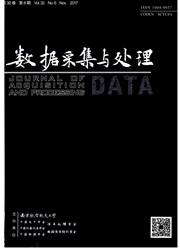

 中文摘要:
中文摘要:
频率不变波束形成器(Frequency-invariant beamformer, FIB)在宽带声信号的无失真采集和处理中具有重要应用。基于空间响应变化函数的最小二乘方法是近年来FIB设计中的代表性方法,本文研究表明该方法的性能受频率不变波束形成(Finite impulse response,FIR)滤波器抽头长度的影响,增大抽头的长度可有效提高FIB设计的性能。但随滤波器抽头长度的增大,波束形成器的实现复杂度亦变大。针对这一问题,本文提出了一种基于FIR滤波器抽头稀疏化的最小二乘FIB设计方法,利用信号稀疏表示理论中的迭代加权z,范数优化实现了低复杂度最小二乘FIB设计,并通过设计实例验证了所提方法的有效性。
 英文摘要:
英文摘要:
The frequency invariant beamformer (FIB) is of great interest in practice for distor- tionless broadband audio signal acquisition and processing. One of the representative approa- ches recently proposed for FIB design is the least squares method based on the spatial response variation (LS-SRV). It is noted that the performance of the LS-SRV is dependent on the tap length of finite impulse response (FIR). By increasing the FIR tap length, the FIB perform- ance can be effectively improved. However, this is at the cost of greater implementation com- plexity. To combat this problem, an improved design scheme with sparse FIR tap coefficients is proposed. The proposed approach is based on the iterative reweighted minimization from sig- nal sparse representation. The efficacy of the proposed approach is evaluated by design exam- pies.
 同期刊论文项目
同期刊论文项目
 同项目期刊论文
同项目期刊论文
 Robustness analysis of nearfield subband beamformers in the presence of microphone gain and phase er
Robustness analysis of nearfield subband beamformers in the presence of microphone gain and phase er 期刊信息
期刊信息
